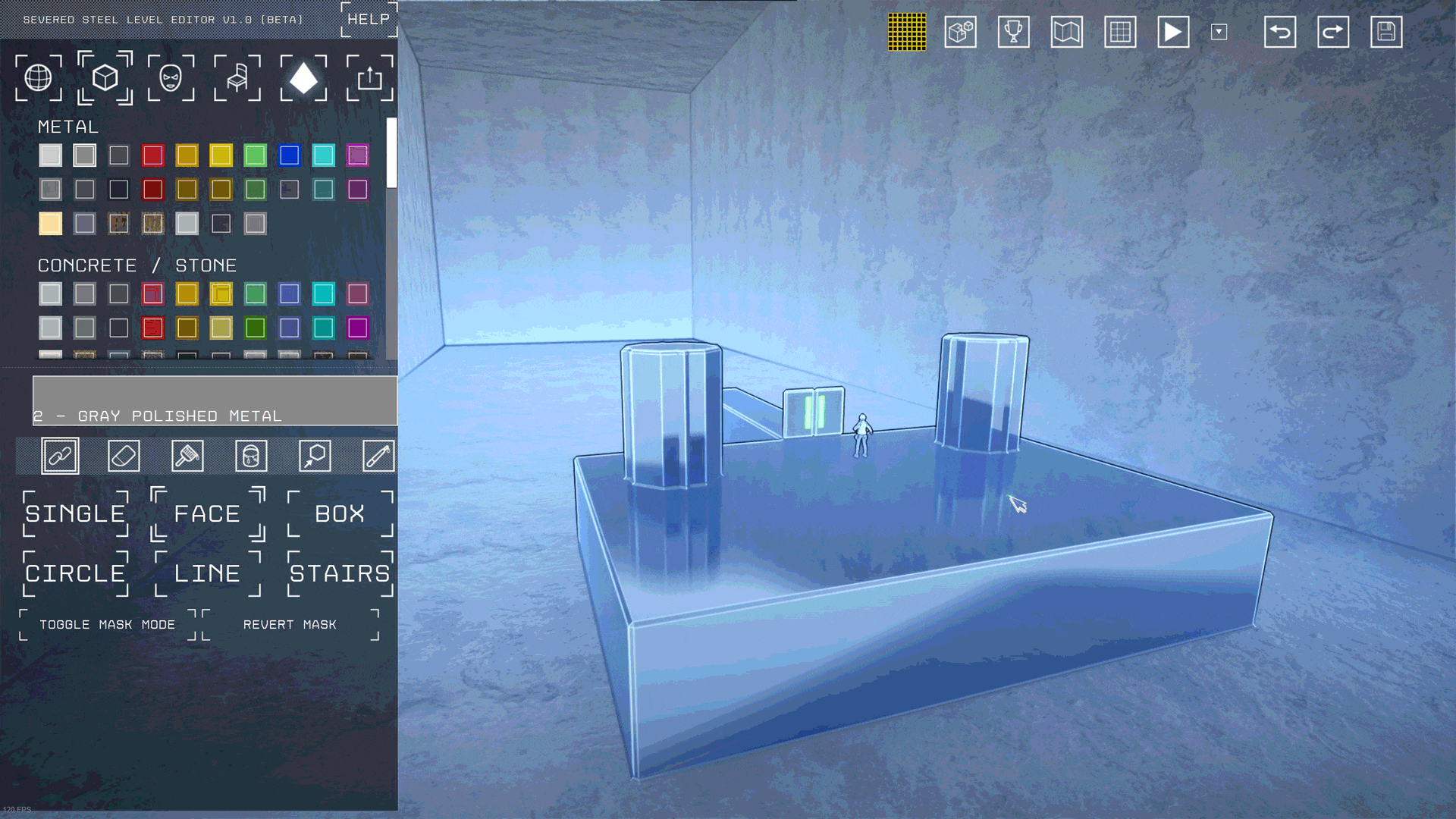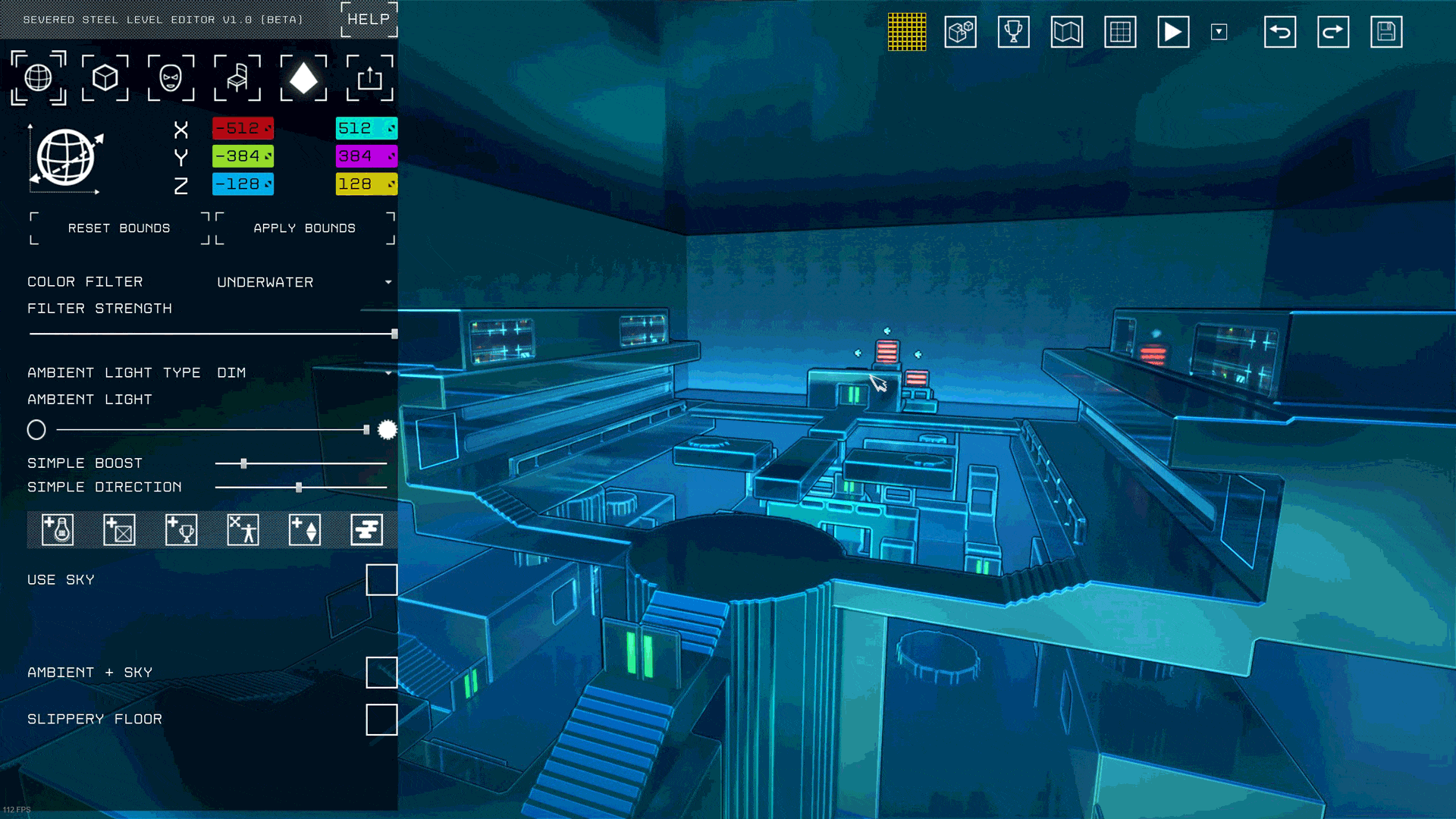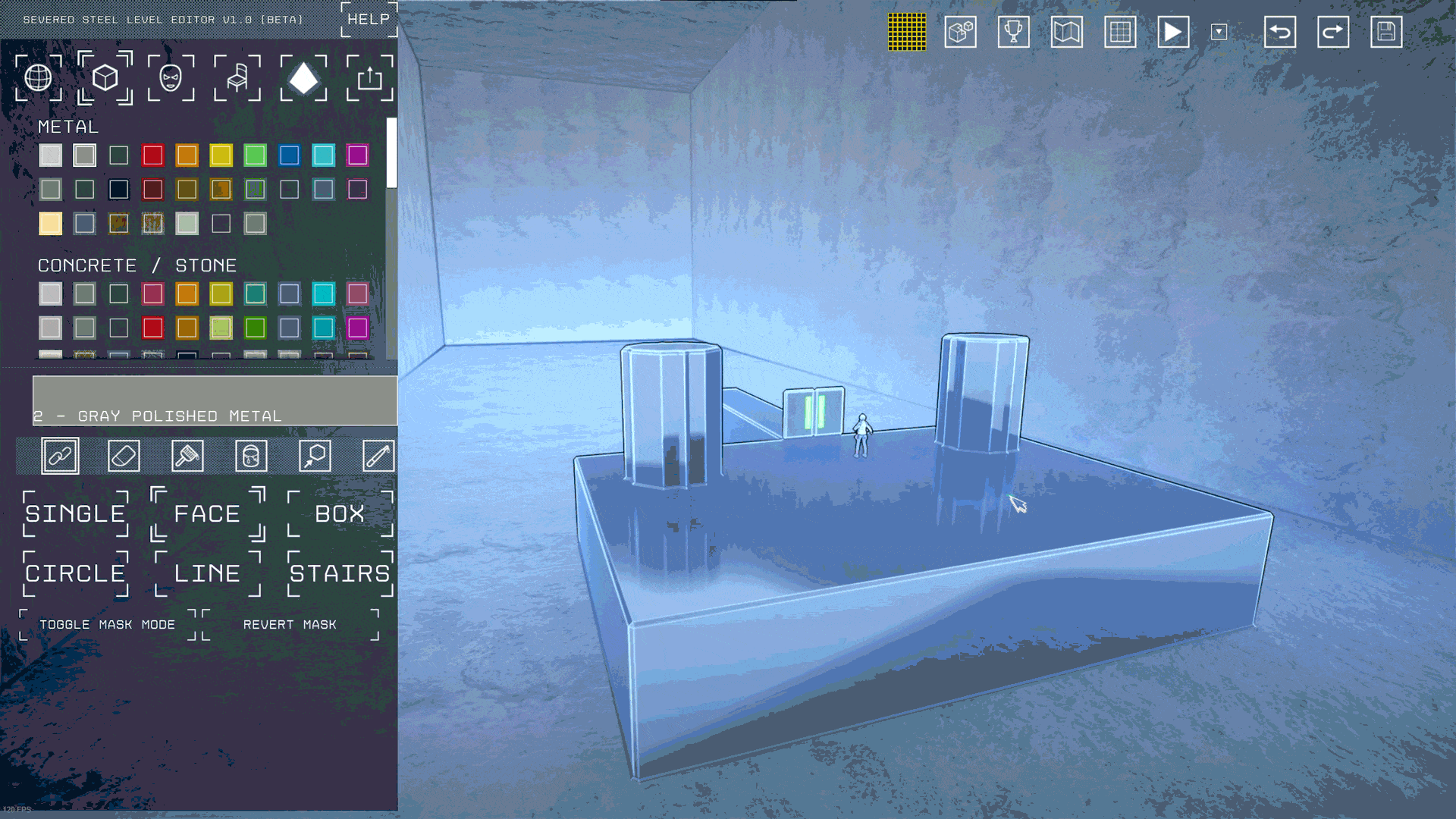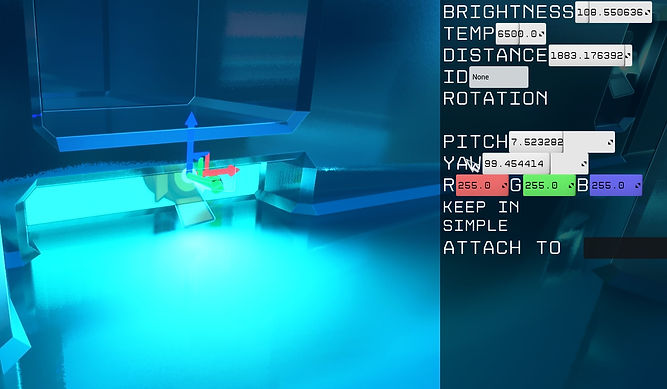Cryochamber
Cryochamber is a fan mod, placing players inside of a experimental weapons facility protected by high levels of security systems and personal with the aim of fighting for freedom.
Project length = 1 week
Behind The Scenes
Cyrochamber is a standalone level available for Severed Steel through the workshop, built in the game's beta level editor which is created with UE4. The level follows the design conventions seen throughout the official game and other mods, such as the primary focus on fast pacing, close quarters gunplay, and variety of routes for players to explore and fight through.
The initial idea for the level was to have a smaller and more corridor like level inspired by official levels in the campaign. This level would have players fight throughout tough corridors with a emphasize on corners and room by room clearing. Overtime, this idea was changed to focus on a more open arena for players to fight on, with a larger sense of visuals, theme building and verticality to break up the monotomy of room by room fighting.
The first iteration was done through simple floorplans to analyze the overall size of the level and to experiment with the voxel tools. An initial blockout was done to establish sense of pacing and direction before moving onto adding in details. These details included connecting rooms, adding dugouts and indented walls, stairs and key interactables such as doors and teleporters to be scripted later on. The overall cold theme of the cryochamber was established through colour use of blues, alongside adding in electronic meshes, computer glass, machines and emissive lighting.



After establishing the blockout with the added details, placements for enemies and weapons were added and playtested with to ensure decent player balance and reasonable fighting scenarios. This led to some changes such as reducing the amount of enemies for the first 2 fights, but adding in another wave after destroying the power. Emissive blues were also placed under weapon spawns and positioned in the players main path to add weapon variety and balance before major fights.
After this was balanced, triggers were added to the level and ID's were gived to specific props such as doors, enemy spawners and interactable props (power switches). The scripting language done through the map settings allows for a level designer to set a stage, this stage would have objectives that the player needed to complete and events that would automatically fire. An example is stage 1, when the player needs to destroy the power as a objective, and the doors to get there unlock as a event.
These events also control when triggers for enemy spawners activate and when doors unlock, with objectives marking props and enemies needed to complete the objectives within the stage. This built in system is more flexible then it first seems and allows for quick and structured scripting for set pieces, however can quickly get out of hand if naming conventions are not used from the start, with basic functionality for gameplay objectives and not for controlling visual set pieces.
Once these triggers were put in place, they were tested and patched to fill all areas since the triggers are independant and if a player backtracks down the opposite path it can cause the event to fire again, so this was fixed by repositioning one big trigger that was unmissable. Once all this was done, final sizing changes were made and visuals outside the map were finalised before being uploaded to the steam workshop.
Final Renders




Technical Quirks
Because this editor was labelled as "beta", there were some key issues that made the editor more finicky then others, such as the older chroma engine used for downtown. Some bugs included broken "undo" functions when spawning/transforming props that would crash the game if not deleted from the scene. Other bugs included drawing styles such as boxes, circles or line drawings not being selected properly if done through keyboard shortcuts.
Minor bugs throughout include unclear design with triggers, as they are required to be saved manually when a change is made, despite the rest of the spawners and mechanics not requiring this which led to confusion with the triggers behaviour. Lights are extremely basic, though this can be argued it helps as a creative limit as it forces to players to think about optimisation with light casting entities. The last minor bug was that the music was originally planned to start when the player got into the first fight, done through the map settings, but this never seemed to trigger so it reverted to just starting on level load.
Despite these quirks and bugs, the editor overall was fairly easy to understand and use. When you pair that with the context that this basic level editor is used to make 1-2 minute levels within a voxel art style, it becomes a handy tool for fast iteration and building, although it can start to fall apart and become awkward if the level tries to break away from that convention
Overall this level was a lot of fun to put together as the basic and easy to use level editor allowed for quick iteration, enjoyable voxel placing and enjoyable gameplay/music through the editor.
Example of editor quirks




Skills Learnt
-
Refined exploration of built in level editors vs standalone level editors
-
Learnt voxel based level design alongside creating a custom map within one week
-
Improving designs by using a more iterative approach within the engine to fix early foundational issues which I can then expand on with level theory
-
Tackled issues within my skillset such as scripting outside of blueprint and structured triggers
Skills Used
-
Level Editor built within UE4
- Steam workshop
- Iterative development



